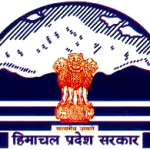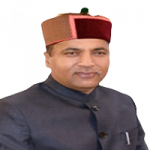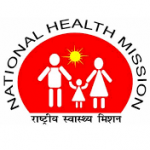E-Health Programme
A health information system (HIS) refers to a system designed to manage healthcare data. This includes systems that collect, store, manage and transmit a patient’s electronic medical record (EMR), a hospital’s operational management or a system supporting healthcare policy decisions.
Key Features -:
- Based on Open Source Platform – which is low cost, scalable & sustainable.
- Integrated suite of 10 modules with a Hospital Core module which helps in managing other ancillary services modules.
- Adheres to Clinical Vocabulary Standards – ICD-10 & Snomed-CT making the system inter operable and other Global Standards.
- Integrated with DHIS using the WHO SDMX.HD(Statistical Data and Meta data Exchange ) standard, enabling the generation of aggregate hospital reports and management indicators.
- It includes a suite of reports which has been developed using BIRT for supporting clinical, administration, and managerial systems reporting and strengthening.
- Locally owned and managed by respective hospitals.
- Product approach that can be customized to any level of hospital from (Primary to Tertiary) in less than 2 weeks.
- Sleek and user friendly interface
USP Of HIS Developed By HISP India-:
- Experience worth 10 years of supporting HIS application in a public health settings similar to Bhutan.
- Our product has matured from a simple system in Himachal to a more complex and automated one in Kenya and Tibet.
- iHOSP is based on 2 important pillars – information flow and work flow both non-compromisable.
- One size doesn’t fits all, therefore iHOSP is not a ready-made solution- its tailor made- based on requirements of the user.
- Every effort is made to keep the work flow intact, so that the transition is only from paper to computer – keeping all essential work flows same , with value addition .
List of Modules/Services Supported-:
- Hospital Core
- Registration
- Triage/Patient Queue
- Patient Dashboard
- OPD
- IPD
- Pharmacy
- Laboratory
- Radiology
- Blood Bank
- Operation Theater
- Billing
- Inventory
- DHIS2 Reporting Module
- Business Intelligence Reporting Tool (BIRT)
- Possible integrations with PACS, LIS and RIS

Standards, Security and Technology Stack-:
- Vocabulary Standards: ICD 10 and SNOMED CT
- Communication Standards: HL7
- Data Exchange and Interoperability Standards: WHO SDMX/ADX
Technology Stack-:
- Programming language – Java
- Technology – JSP
- Framework – Spring MVC, Hibernate
- Scripting Language – Javascript, Jquery
- Tools – GitHub, Tortoise SVN, Building tool Maven, Eclipse.
- Web Server – Apache Tomcat
Intuitiveness, Ease of Use and Customization Features-:
- Setting up Patient and Information Work flow as needed
- Concepts Dictionary
- Add/Remove New/Existing Fields
- Add menu options
Reporting Capabilities-:
Hospital based Reports
- BIRT (Business Intelligence and Reporting Tools), is an Eclipse-based open-source reporting system for Java and J2EE-based web applications is primarily used as the reporting engine.
- BIRT allows for sophisticated output in PDF, Excel or HTML format, including graphics, tables, graphs, and charts.
State HMIS is based on a tool called DHIS2 (District Health Information System) for collection, validation, analysis and presentation of aggregate and transnational data, tailored (but not limited) to integrated health information management functions.
- An online system for the data entry ( facility wise data ) as per the reporting formats prescribed by MOHFW, GOI.
- Main focus is on capturing the data pertaining to RCH indicators as per the requirements of MOHFW, GoI.
- All the facilities up to sub-centre level are reporting through HMIS on monthly basis.
- Online data entry takes place at block level.
- Data entry is completed by 10th of following month.
- HMIS is a single source of information for monitoring and planning purposes in the State.
- The data gets auto lock on the 10 of every month to avoid data tempering.
- The system have a inbuilt validation rules which picks outliers and give a level of authenticity to data.


Vision
- To make DHIS2.0 a sustainable system for the users which addresses all their increasing data needs both at the national as well at the state level.
- To make DHIS2.0 a data warehouse with high-quality data so that it becomes a source of strong evidence based decision making.
Feature of DHIS2-:
- Open Source.
- Cloud deployment.
- Do-it-yourself set up.
- Collaboration.
- Community support.
- Interactive dashboard.
- Inbuilt GIS.
Self-service dashboards with charts, maps, pivot tables-:

Web GIS using Google Maps background layer-:

The Reproductive and Child Health (RCH) Programme was launched in October 1997. The main aim of the programme is to reduce infant, child and maternal mortality rates. To gradually expand the scope and coverage of the Family Welfare services to eventually come to a defined package of essential RCH services.
This programme aimed at achieving a status in which women will be able to regulate their fertility, women will be able to go through their pregnancy and child birth safely, the outcome of pregnancies will be successful and will lead to survival and well being of the mother and the child.
Components-:
- Name based on line application for the tracking of services provided to Eligible Couples, Pregnant women & Infants (ANC , PNC & immunisation Services etc.)
- Basic Information is captured in RCH Registers – implemented up to Sub-Center level (Village wise)
- Unique Id is provided to Eligible Couples & Infants (Generated automatically at the time of updation of pregnancy outcome)
Comprehensive Call Center (MCTS /104 Health Helpline / Grievance Redressal / Adolescent Health Counselling) has been set up at Solan in March 2016
27 seats call center includes 20 Call Center Agents, 05 Health counselor (including 2 clinical psychologists and 2 doctors.
 Telemedicine is the use of telecommunication and information technology to provide clinical health care from a distance. It has been used to overcome distance barriers and to improve access to medical services that would often not be consistently available in distant rural communities. It is also used to save lives in critical care and emergency situations.
Telemedicine is the use of telecommunication and information technology to provide clinical health care from a distance. It has been used to overcome distance barriers and to improve access to medical services that would often not be consistently available in distant rural communities. It is also used to save lives in critical care and emergency situations.
Although there were distant precursors to telemedicine, it is essentially a product of 20th century telecommunication and information technologies. These technologies permit communications between patient and medical staff with both convenience and fidelity, as well as the transmission of medical, imaging and health information data from one site to another.
Telemedicine in Tribal Areas:
- Keylong – District Hospital from 2015-16
- Kaza- Community Health Centre from 2015-16
- Pangi (Killar) – Civil Hospital from Oct.2018
District Shimla, Chamba and Sirmour:
- 25 Health Facilities at CHC, CH & PHC level from 2015-16
Telemedicine at Sub-Centre Level:
- Sub-Centre Level: In 50 Sub-Centres in the State
Tablet based real time data entry & updation of MCTS / RCH records through ANMOL application



